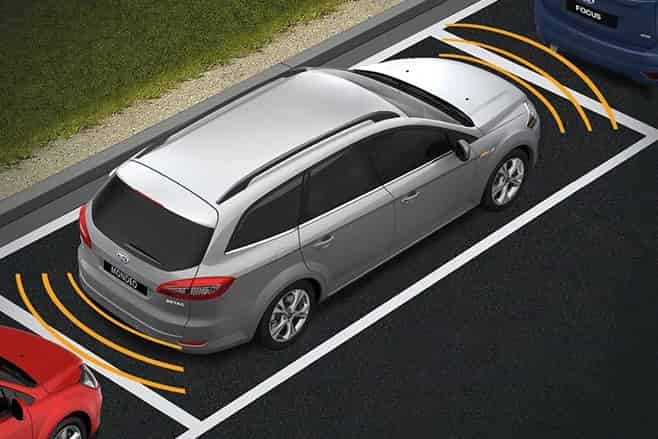How Does a Self-Parking Car Work?
There’s some good news for the countless drivers who’ve dented their hub caps or scratched their bumpers and fenders trying to fit into a tight parking spot. Most automotive manufacturers have rolled out their own version of the self-parking car.
The self-parking feature can slide your car into parallel parking spots or on and off-street parking spaces. All this while you simply sit behind the wheel doing nothing. This technology eliminates the stress associated with moving your vehicle back and forth multiple times before you can perfectly park in a spot.

Not only are self-parking cars sophisticated enough to slide into a parking space without damaging the vehicle, but they are also becoming more and more affordable with each passing day.
How Does a Self-Parking Car Work?
There is indeed a sophisticated and complex backend integration of your vehicle’s hardware and software to make self-parking a reality.
But, for the driver, it’s a seamless process that involves the following 3 steps:
-
Step 1
A driver identifies an ideal parking space and drives slightly ahead of it. The more expensive self-parking vehicles do this bit on their own, which means they find a suitable parking spot, and drive ahead of it.
-
Step 2
Once the driver has identified the parking spot and halted their vehicle slightly ahead of it, the car’s software issues instructions to shift into the correct gear. After switching to the right gear, the driver removes their hands from the steering wheel.
-
Step 3
At this point, parking automation engages and steers the vehicle into the parking spot. The driver and passengers will witness the steering wheel turning on its own. The vehicle also operates the accelerator and brake as and when needed to slide into a parking spot. Once the vehicle is safely inside the spot, it straightens the wheels to make it easier to vacate when the time comes.
Even though the vehicle is parking itself, the proximity sensors will sound an alarm if the vehicle gets too close to the wall behind or other vehicles nearby. Luxury vehicles that offer this feature will often pull themselves out of such a situation without human intervention.
Other vehicles will, at this point, ask for human assistance for switching into the driving mode to pull the car out a little and then reengage the self-parking feature. Mostly, self-parking cars can park in tight parallel parking spots in one or two attempts. Seldom do they get stuck and seek human intervention.
Moreover, the self-parking feature in vehicles is designed in such a way that humans can stop the self-parking activity and take charge of their vehicle at any point.
In the End
The self-parking feature is predominantly used for parallel parking. However, several drivers also use it for diagonal or right-angle parking spaces. This feature even works for off-street parking or side lanes where that may have unmarked parking bays.
What’s more, self-parking technology has matured compared to self-driving technology, which is still relatively nascent. This makes it affordable to install in various types of cars and not only luxury vehicles!
These self-parking features integrate perfectly with Get My Parking’s smart parking platform to make parking a completely hassle-free experience for parkers. Take a look at our solutions customized for Automobile OEMs to know more!
